|
Guest post by B. Lynn Goodwin What To Consider Before Submitting to Writing ContestsYou polish your writing, imagining your audience. You read it over. Out loud. Does it say exactly what you want it to say? You have a friend read it to you. Impressed, she says, “You should submit this to contests. Get some recognition for your work.” Maybe you leap at the idea. Maybe you hesitate. Contests make you feel vulnerable. Besides, there’s almost always a fee and nothing’s guaranteed. Perks of Entering a ContestPlacing in a writing contest is a huge boost to your work, though. Acceptances matter. Here are some other perks you might get:
What Do Judges Look For?Without a rubric, judges look for writing that works, ideas that seem original, and something that touches their hearts. They look for carefully edited pieces free of mechanical glitches and work that either says something new or says something traditional in a new way. Instead of writing a traditional rubric as a contest administrator, I’ve sent the questions below for judges to consider. Put on your editor’s hat and answer them before you send your work.
Looking for a starting place? Take a look at the current contest on Writer Advice, www.writeradvice.com. Research other contests and opportunities by Googling contests + (your genre). Questions? It’s easy to reach me through the contact box at www.writeradvice.com.
24 Comments
Guest post by Robin Mimna Most writers who have put their work out there have at least one regret that stands out among the buckets of rejection that rain down on them. That one agent or publisher you felt an instant connection with. The one you knew in your soul would not only get your ideas, but champion your work like no other could. For me, that’s Graywolf Press. In retrospect, I aimed pretty high and it wasn’t publication, but a paid remote internship I was after. Advertised on Instagram, I was one of Graywolf’s 44,000+ followers who got the update the day this “small press” posted the position. I became infatuated with the idea of beginning my publishing career with such a lofty internship and poured over the requirements. Graywolf primarily works with established authors or academics like Claudia Rankine, author of Just Us: An American Conversation. And unlike the scores of younger, college age applicants all over the country, I was over forty with a fulltime job, limited flexibility and not much experience to bring to the table. Nevertheless, I threw myself into writing a killer cover letter outlining why all the knocks against me were irrelevant, and why I was (obviously) the best person for the job. Founded in 1974 by Scott Walker, Graywolf Press started out as limited hand sewn chapbooks. In 1984 it was incorporated as a 501(c)(3) nonprofit organization and later moved to St. Paul, Minnesota. Today Graywolf publishes about 30-40 books a year, mostly poetry, memoirs, essays, novels, short stories and translations. Occasionally, they will have an open period or contest, but otherwise does not accept unsolicited submissions. They vet most of their authors through magazines, writing conferences and agented submissions. In short, it’s an exclusive press. In preparation for my grand application. I haunted Graywolf’s website and social media. While doing research, I purchased several of their books, including The Collected Schizophrenias by Esme Weijun Wang. It’s an intimate view from the point of view of someone who struggles with the effects of mental and chronic illness. I spent weeks working on my application, which included a cover letter and a thousand-word analysis of a book of my choosing. I settled on The Diving Bell and the Butterfly by Jean-Dominique Bauby. Not just because it’s one of my favorites, or because I’ve read it a million times, but it’s also right in line with what Graywolf publishes. Bauby’s short memoir is a day dream-nightmare into his transition from able-bodied, womanizing editor of Elle magazine in Paris, to bed-bound quadriplegic. After a massive stroke took out Bauby’s brain stem, he was diagnosed with “locked-in-syndrome.” This left him unable to move beyond a slight swivel of his head and a single blinking eye, yet his mind fully intact. Using a translation alphabet designed specifically for him, he was able to blink out his memoir using his left eyelid. He did this without losing a hint of his sharp sarcasm or high humor. Sadly, Bauby died two days after the book’s publication. With the confidence of someone suffering from her own massive stroke, I whisked my application over to Graywolf, wishing only that I could stand over the shoulder of the lucky editor who got to read MY perfect and inspired analysis. I wish I could write you a happier ending to this story, but this isn’t fiction. During the reading period I checked my e-mail in fifteen-minute intervals and picked up my phone every time it rang. (So many expired car warranties…) But no offer came, and no e-mail was sent. Obviously, I didn’t get the internship. I didn’t even get a rejection. I found out I didn’t get the job when they announced on their website a few weeks later they’d filled the position. I’m totally fine by the way. I hardly ever talk about it publicly anymore. (I’m not crying, you’re crying) Graywolf posted two new paid internships this year. Although conducted remotely, all applicants must reside in California, Hawaii, Minnesota, or New York for the duration of the internship. Maybe they figured out offering a national paid internship in the middle of a global pandemic would yield more applications than they cared to review. It’s clear breaking into publishing in the modern age is a complicated process, but not impossible. Take your shots when you have the chance and move on from the rejections. My writing might not be sophisticated enough to grab Graywolf’s attention, but you never know. Paying dues sometimes means finding opportunity in the failures. I ended up using my grand analysis for a literature class later that year and got a B+ on it. Perhaps it wasn’t the inspired piece of iconic work I imagined it was, but it got me through a tough spot while I was struggling with my Spanish II final so, I’ll call it a win. Adios!
Editing and revision can be incredibly hard work, but useful tools can help make the process easier. Over the past few months, I've been keeping a list of my favorite items I use to pour over manuscripts. Everything listed below is something I have in my house and am giving first-hand recommendations for. Hopefully you will find something that helps you be a little more productive so you can reach your editing and revision goals. 1. These red pens are great for marking up printed pages. The thicker tip is perfect for making those added commas stand out. Plus, I get a whole box so I can always grab a new pen when I leave the other one in some mystery place in the house. Get a pack of 12 on Amazon, $14.99. 2. This might be one of my favorite purchases of all time for my home office: a coffee warmer. How did I ever live my life without one?! My kids always want 10,000 things in the mornings and I used to microwave my coffee at least three times every morning. Not anymore! I make my cup and set it on this warmer and it's just the right temperature whenever I can manage to take my next sip. Mr. Coffee coffee warmer, $11.99 on Amazon. 3. Sitting in a chair all day can be hard for your back and bum, but I love this super-comfy chair cushion you can pop on any desk chair. Memory foam and cooling gel? Yes, please! Get it on Amazon for $33.95. Your bum will thank you. 4. Staring at a screen for a long period of time can be really hard on your eyes. That's why I like to put on these stylish blue light blocking glasses. They have ten different styles to choose from and keep the headaches at bay. They are only $19.95 on Amazon, which is cheaper than a visit to the eye doctor! 5. Here is an item I use every. single. day: a portable laptop desk. You can use this bad boy while working on the couch, in bed, or as a standing desk. It's so versatile, I use it more than my regular desk! It's worth the investment; $49.99 on Amazon. 6. Sometimes it takes me a while to get focused, or to stay focused on editing. That's why I like to light up my lavender Yankee Candle. It makes me calm and relaxed so that I can let go of distracting thoughts and focus on my work. I love this candle brand because they last a long time and the scent carries well. $22.99 on Amazon. 7. You know, I used to tease people who had wireless mice. Why do you need an extra mouse when you have one right there on your laptop? Then I was gifted one. So. Much. Easier. I get it now, and not only that, I'm a huge fan. I love how this cute wireless mouse has so many color choices. And for only $11.99 on Amazon, it's a steal. (Can you tell I love purple??) 8. There's nothing better for bringing attention to a part of your manuscript than a great highlighter. What I love about these highlighters is the quality of the ink and how you can see how much you have before it goes out. Plus they have great precision tips. Get them on Amazon for $9.97. 9. I don't mess around when it comes to being comfortable. Cozy slippers are definitely a must-have for me to get any work done at home. These ones are my tried-and-true brand that I can also run outside in to roll the garbage can down when I hear the truck coming. They also have cute colors. I already had a purple pair, so the current ones are pink. $24.99 on Amazon. Guys, I asked my husband for his slipper recommendation. He likes this shoe-looking style slipper. 10. Let's face it. Editing and revision can be boring. So boring that you might start to nod off. I have a trick to wake myself up and get refocused: chewing on crushed ice. I am kind of picky about the size of the crunched up ice chips. This ice crusher makes the PERFECT SIZE ice chips to munch on and wake yourself up. For $36.47 on Amazon, it's worth every penny for each hour it buys me. 11. I will confess, my husband teases me about this one, but I do not care. This sleek plastic ruler makes me slow down and focus on a manuscript line-by-line. The transparency allows me to see the next line if I need to, while keeping my eyes on the current one. It's only $2.69 on Amazon and a cheap, easy tool to stay on task. 12. Ginseng is a wonderful supplement for brain health. I asked my doctor what brand of vitamins she recommends, and her answer was Now brand. This ginseng supplement can help boost your brain power. Get a bottle of 250 capsules on Amazon for $18.33. 13. If you get nothing else on this list, GET THIS. The Chicago Manual of Style is the number one tool I use while editing, personally and professionally. There is nothing like being able to go straight to the rule book to answer your grammar and convention questions. This book is HUGE, 1146 pages, which is why it costs $29.62 on Amazon. BUT, you will use it over and over and over again, and have the satisfaction of knowing you've gotten it right. Well, there you have it. Those are my must-have favorite tools for editing and revision. Now get that manuscript and get to work! *Note: I signed up for an Amazon affiliate account after I made my list, so if you make a purchase, I may get a small commission...so I can buy more slippers!
Guest post by Antoinette Truglio Martin I always wanted to be a writer when I grew up. At a young age, I was awed by lines that formed letters and gathered into words, sentences, stories. I played with the sound of language, the syntactic cadences and clever semantics. Through the written word, scenes came to life, characters resurrected from the words, and imagination had a place to grow. Since I had learned to make those lines into words and sentences, training to become a writer should have been a cinch. Instead, Writer’s Training held many parts and was a long haul. As a kid, I filled composition notebooks with stories about horses (something I knew nothing about), and sisters (a subject I knew too well). I wrote silly plays and directed my sisters and neighborhood friends to act them out. Everyone shared one crumbled handwritten script since copiers or ditto machines were not in the production budget. When I was a teenager, diaries with locks held my deepest thoughts and darkest secrets. The practice led me to journaling, where chronicles of mundane events, epic adventures, worries and revelations unfolded. Practice was part of Writer’s Training. My parents enjoyed my writing and claimed that I was the writer in the family. They saved some thoughtful poetry and stories but did not post them on the refrigerator like my siblings’ A+ math tests. No one had the notion to read a kid’s poem when looking for ketchup. Encouragement was part of Writer’s Training. When it came time to pursue college, I announced I wanted to be a writer. Writer was not a choice. My father said that writing was a hobby, not a job. My mother added, “If you have to support yourself alone, you’ll starve.” Teacher, nurse, or social worker were the given career choices. I was not sure what a social worker did, and I fainted at the thought of blood and guts. I went to college to be a teacher—specifically a speech therapist and special education teacher. Adaption and detours were part of Writer’s Training. I fit a few creative writing electives where harsh criticism and rejection prevailed. One professor stated my work was dribble. “Come back after you suffer in life,” he said. Pursuing a life of suffering was not my ambition. I lived a charmed life filled with blessings and still wrote. Developing a tough skin and learning from rejection and criticism were part of Writer’s Training. Life moved forward. I married my high school sweetheart. We settled in our hometown, had three daughters, a dog, cats, and boats, and a load of family and friends surrounding us. I juggled home and work life. Teaching suited me. It was a creative calling, and I loved working with children. I made felt board characters to play out my tales for my daughters and students, created tongue twister stories for articulation drills and scribbled ideas, thoughts, and observations. I bought a pretty journal notebook each year with the vow to fill it. Some years were more prolific than others. Eventually, I wrote two regular columns in local periodicals. The pay was terrible, but seeing my words in print fueled the writer’s drive. Perseverance was part of Writer’s Training. Writing is a lonely business. One sits with a paper, pen or laptop, waiting for the next brilliant word to appear. Stories could live in the writer’s head for decades, before taking shape on paper. I am not that writer who can compose from a spark and produce a worthy work of art quickly and confidently. Before social media was invented, I joined face-to-face groups with fellow writers of varying levels of success. It proved key to gaining skill, confidence, and a genuine cheer squad. I took on roles in the regional children’s lit group, met with writers in our homes, and, recently, have joined virtual Zoom sessions. The rigor of workshopping, researching, and presenting honed my craft. I put in the work, learned, evolved, explored, took risks, and was generous with my fellow wordsmiths. Being part of a tribe was part of Writer Training. To date, my authorship comprises a small library. I have not reached fame or fortune, but have a sweet following and attained that writer’s badge. It’s been a long haul—a lifelong labor of love. Passion has always been part of Writer’s Training.
Guest post by Christina Dankert Fifteen years ago, I remember walking around my college campus and stopping to look up at our eight story, beautiful campus library. I was working on my degree in Early Childhood Education and this library had the best children's floor filled with books, puppets, educational games, die-cut letter and shape presses, and other materials we could check out. I knew then that I wanted to write a book and I wanted it to be in that library for future aspiring teachers to check out and read to their students. Fast forward a few years into my teaching career. I began as a kindergarten teacher and then moved to second grade. I love working with young children as you have the opportunity to not only teach academics, but life lessons. After a few years of teaching, I had my own children. Between my children and my students, I was reading A LOT of picture books. There are so many books available regarding character traits, kindness, and empathy, which are some of my favorite books to read aloud. However, I failed to find a book on kindness that included the idea of being kind to ourselves. This is when the idea of The Kindness Machine began. I envisioned the writing journey to be effortless and that someone would magically scoop up my story and run with it. The world of writing is a true test of grit, patience and perseverance. I wrote my story over the course of a few months and had what I thought was a solid beginning, middle and end of a children’s book on kindness. Now what? What was I supposed to do with those words? I contacted our local children’s librarian who helped steer me in the right direction by pulling books such as Children’s Writer’s and Illustrator’s Market and Guide to Query Letters. I quickly found out that this process of getting a manuscript submitted, accepted and published would include a lot of research. I read books about writing children’s books, I listened to podcasts, I read blogs, and attended a Women in Publishing virtual conference. I asked friends, family and co-workers to read my manuscript as beta readers and honestly critique it. That may be one of the most challenging steps in the writing journey. No one wants to be challenged on their work but more importantly, no one wants a rejection letter either. It is easier to take honest and constructive feedback from your early readers and modify your work than get a rejection letter. I am beyond thankful for all of my beta readers as they all took my work and helped polish it. Through the Women in Publishing Summit I was able to not only gain a wealth of knowledge about the publishing industry, but I found my writing tribe. I met a group of ladies with hearts of gold who understand the writing journey, who have faced rejection, several have published books, but all of them had a goal to publish the piece they were currently working on. The support and motivation from these ladies has been incredible and we continue to meet via Zoom twice a month. After years of dreaming, months of writing and researching, I am happy to report that The Kindness Machine will be available for pre-order on November 13, 2021, which is World Kindness Day. The absolute icing on the cake in my writing journey, is that my husband, Chad, is the illustrator. He is able to take the words and bring them to life through his amazing illustrations. The Kindness Machine takes place in a second-grade classroom with an engaging and energetic teacher, Mr. Wilson. Mr. Wilson loves to build special inventions for his students to help teach concepts in engaging ways. He builds a kindness machine and it is here that his students learn how to be kind not only to others, but to themselves as well. As adults we struggle with this idea of being kind to ourselves. We are our own worst critics. If we can teach children to be kind to themselves at a young age, imagine how strong and confident they will be as adults. To anyone with a story idea, my advice to you is to write it down, spend time editing and allow other readers to give you feedback. The feedback is not an attack on your writing, but if you invite the right readers into that space to help you critique it, they are giving you feedback because they want you to succeed. My other piece of advice is to find your writing tribe. Your family and friends will support you, but your writing tribe will understand each phase of your writing journey. Most importantly, don’t give up. Your story has a place on a bookshelf. Your story needs to be told. Your story needs to be shared with the world. Keep writing, be kind to yourself and I can’t wait to read your work. 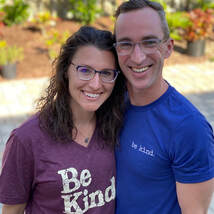 Christina Dankert is a second-grade teacher. She has a passion for literacy and believes that we can change the world by reading to the children in our lives. Click here for free kindness bookmarks for teachers. https://christinadankert.com/ Instagram: @Christina Dankert Facebook: @ChristinaDankertAuthor Guest post by Jessica Williams How do I find the time to write? Seriously. I get up at 6:00am. Dogs are begging to go outside to do their business. Lunchbox packing. Then breakfast has to be made. School homework. Was that done last night? The husband is asking about a favorite pair of socks he can’t find. The mountain of dishes are still there from the night before. And your child is yelling for mommy about where his shoes are! I have a zoom meeting with the boss at 9:30am. And now it’s 8:00am, and magically I can somehow do all of that, and get a shower and somehow not injure myself while shaving my poor hairy legs! Oh yeah, and I have to drop the kid off at his first day at school! I almost forgot! Me? Time to write? You’re funny. But amazingly, I do find time to write. It will sound crazy. Maybe even insane. But I do find time for my most favorite hobby in the whole world....writing! It’s my favorite type of therapy. And heaven knows, I desperately need my therapy! And if the day is full of chaos and people not leaving me alone! Well. There is one place, that I can guarantee 5-8 minutes of solid writing time. It may not be much! But it’s better than nothing on those days. That’s right, you guessed it. The bathroom! There’s even a seat in there for Mama to sit down and chill for a moment! Don’t have a notepad? No pencil? No pen? No problem! Me neither. Tug that little piece of handy dandy technology right out of that pocket or bra and open a draft email and start typing whatever comes to mind, sista’. There’s no rules. No games. No chaos. Just you, being you. Writing from what is coming from your soul, your heart, and your mind. All those raw, real feelings and thoughts that are not being judged or interrupted. It’s amazing how fast I learned to type on my iPhone. While sitting on a toilet. I know. It’s not the most beautiful image in your mind. Neither is childbirth. But you know what?! Mama has to do what she has to do! And if sitting on the toilet for an extra five minutes to obtain sanity or peace (or both), then have at it, love. You deserve it! As a matter of fact, you’re quite possibly sitting on your toilet right now reading this. Oh I get it. I understand. I really do. I’m right there with you, girl. Now if you could just figure how to play 20 minutes of relaxing music while enjoying that warm shower without a pair of fingers knocking on the door asking, “Mom!!! Where’s my Pokémon cards?”, you would probably win the lottery. I. Totally. Get. It. I truly do. It’s why I’m sitting on my own toilet right now writing this to you. There’s my secret. For the whole world to know and hear. My secret writing place is not a tiny laundry room, like it was for Stephen King when he was a struggling writer. Nope. It’s a toilet.  Jessica Williams is a Freelance Writer at Citrus County Life Magazine, Prevention Coordinator at Anti-Drug Coalition of Citrus County and Contributor / Writer at Celebrations Magazine. A guest post by Jessica BakerTo start, what is a cozy mystery?Cozy mysteries are lighter than traditional detective fiction. The genre was popularized by Agatha Christie, who created classics like And Then There Were None, the Miss Marple series, and of course, Poirot. Malice Domestic, an annual mystery convention, even named an award after her. Cozy mysteries, often called “cozies,” lack the graphic violence and excessive gore that darker detective fiction have. There’s no explicit sex scenes. Cursing, if there is any, is kept to an absolute minimum. Children and animals shouldn’t be harmed. Some cozies are suspenseful, but they aren’t usually the kind of stories that give you nightmares after reading them. Romantic elements may be present and many are geared towards women. A lot of cozy authors also write romance because there are similarities between the genres. Some are historical, some have magic, and some are just set in the modern-day. Cozies should be an escape from reality. They aren’t as heavy as other fiction and aren’t usually geared around current events. As a result, they are generally lighter to read when life gets too overwhelming. They provide puzzles for the reader to work through and end on a positive note where the killer is always caught. Some questions I asked when I was initially plotting out Murder on the Flying Scotsman were: Who is the main character? Who is with them? Who is the killer? Who is the victim? What is the murder weapon? When does this take place? The murder weapons available vary in different time periods. Where does this take place? Is it a locked room mystery or does it take place in a small town? Why was the victim killed? Why does the main character investigate? How was the victim killed? ProtagonistThe main character, usually female, is an amateur sleuth after something forces them to look for the real killer. They are always curious about the murder that takes place and the smarter they are, the more engaged the reader will be in the story. Sometimes he or she might become a professional detective in later books or may date a police officer, but the main character usually has some other career that translates into their investigations. The job is usually something like baker, librarian, or seamstress. In my book, Lady Thea is a socialite and it affects how she behaves and what she knows about murders. Cozies are more often character-driven and the series usually has the same main character, even if the books aren’t directly related in an overall arc. This means that many cozies don’t necessarily have to be read in order. Suspects and Red HerringsGenerally, the first person accused of the murder in a new cozy series is a close friend or relative of the to-be detective. Sometimes the sleuth themselves might be accused. They might be the only suspect that the police have and the sleuth makes it their mission to prove otherwise. The evidence gathered and the motive might lead to that accused person, and the protagonist may think that they’re guilty. Those are usually the red herrings since they fit so perfectly that they couldn’t possibly have done it. Cozies often take place in small towns or have a closed pool of suspects. If you think about Murder on the Orient Express, the list of people who had the opportunity to commit the murder was limited to who was on the train. In And Then There Were None, only someone on the island could have committed the murder. When should the murder take place in the story?Since a cozy mystery is not a suspense, it’s not necessary to wait until the end to have the first murder. It might be the first thing that happens in the story, especially if that is the catalyst for the entire plot of the book. Most people prefer that the murder takes place in the first few chapters. After all, that’s what they came for. When planning the murder and the killer, it should be something that can be traced back to the beginning. The murderer shouldn’t come out of the blue. They should always have an actual motive, even though the motive isn’t always apparent at the beginning. They don’t have to be someone who is front and center in the protagonist’s life, but they should appear early in the book and usually, the reader shouldn’t have too much cause to suspect them. Clues that point to the identity of the real murderer should be scattered throughout the whole mystery. Half the fun of cozies is solving the murders with the amateur detective.
A guest post by Selys RiveraWhat would most people say is the most popular topic for poetry? From my experience, it’s love. Specifically, romantic love. When I think about poetry, the poets who come to mind are known for their romantic poems. I’m not even talking about the Romantics studied in high school who lived centuries ago. I’m thinking before, during, and after. My mind recalls the entire book of Song of Solomon in the Bible. I’m thinking Shakespearean sonnets, too. There’s also John Keats, Emily Dickenson, William Blake, Lord Byron, Elizabeth Barrett Browning, Langston Hughes, Walt Whitman, Julia Alvarez, Maya Angelou, Tyler Knott Gregson, Sandra Cisneros, Rupi Kaur, and Amanda Lovelace… …to name a few! While many of these poets wrote about other topics, their romantic poems stand out the most to me. I don’t know about other people, but I can recall poems about romantic love much faster than anything else. Shakespeare’s “Sonnet 116.” Byron’s “She Walks in Beauty.” Browning’s “How Do I Love Thee?” Sometimes I’m even remembering poetry collections that had an impact on me and shaped my view of romance, like Whitman’s Leaves of Grass, Gregson’s Chasers of the Light: Poems from the Typewriter Series, and Kaur’s Milk and Honey. The older I’ve gotten, the more I’ve realized that there’s so much more to life than just romantic love. Perhaps one of the biggest lessons is how important it is to recognize and express gratitude towards other areas of love in our lives. Many of these same poets wrote about other kinds of love that are just as good as their romantic poetry. Blake explored love for God and humanity. Keats reflected on loving life. Hughes and Angelou shared about their love for family members. Whitman, Kaur, and Lovelace dove into self-love. Alvarez and Cisneros analyzed the complicated love/hate relationship between English and Spanish or their Latin culture and Americanization. Now, not all of these poets or poems are about love in a positive light. Some are negative too, which is expected in a yin and yang world. Nevertheless, something inside me clicked when I started to see poems about love and heartbreak in a non-romantic way. I’ve been writing poetry since, at the very least, my early high school years. Surprisingly enough, I’ve never considered myself a poet as I used to write poems infrequently. When I started my current romantic relationship, though, I found myself writing poem after poem, some even coming out as a final draft almost immediately. Once I started connecting the dots between poems I read, versus those I wrote, inspiration hit hard. During difficult times, like the death of my grandmother, I wrote poetry. When I passed life milestones, like a meaningful full-time job in a career I’m passionate about, I wrote poetry. While I went through spiritual existential crises, I wrote poetry. And as I learned more and more about myself, I wrote poetry. At some point, I took a step back and realized I was on to something. A poetry collection started to form in my mind. One about love, but not in the traditional sense alone. One that would show readers about healthy romantic love and how much more there is to love than romance. Toni Morrison’s famous quote came to mind: “If there’s a book that you want to read, but it hasn’t been written yet, then you must write it.” (Morrison, n.d.) That’s exactly what I aimed to do in the hopes of joining the conversation and dialogue with other poets across lifetimes, centuries, and generations. I, too, have had something to say about love and how important it is to celebrate all other areas within it too, like family, friends, pets, culture, hobbies, life, spirituality, ourselves, and more. With each poem, my heart seemed to fill with more and more love, affection, compassion, and tenderness. Eventually, it overflowed with healing tears dropping on my notebook or keyboard as I wrote and wrote. Finally, the emotional wave crashed and receded on the shores of my soul, awaking me from my writing reverie and revealing my very first poetry collection in its wake. *Morrison, T. (n.d.) If there’s a book that you want to read, but it hasn’t been written yet, then you must write it. Quote Catalog. Retrieved February 27, 2020, from https://quotecatalog.com/quote/toni-morrison-if-there’s-a-bo-O1M69R7/ Originally from Puerto Rico, Selys Rivera considers herself a God-loving and social justice obsessed chica. With an undergraduate degree in English Writing and a graduate degree in Social Work, she marries her two passions by writing to inspire others and voice issues she's passionate about. She is also the author of Rise in Love: A Poetry Chapbook and Social Justice Advocacy 101: How to Become a Social Justice Advocate from A to Z. To read more of her work, please visit her website at www.worthareadtoo.com. You can also follow her on Facebook, Goodreads, and Twitter @SelysRivera to stay connected.
Getting the word count correct is a very important skill for anyone looking to publish picture books. Agents and publishers won’t accept manuscripts with high words counts. Distributors won’t select them for sales representation either. Why? Long picture books don’t sell very well anymore. Why Long Picture Book Manuscripts Don’t Work Small Press United, an indie book distributor, has this in their Reasons for Declining information: “a children's picture book with pages that have large amounts of text no longer works as a picture book.” Recent market surveys show that children age out of picture books at six, earlier than previous generations. Kids are moving up to early readers and chapter books younger than before. This in and of itself is a great thing. We have better readers! But it does raise a problem for picture book authors and publishers. We need to adjust our standards to match what children need and ultimately, what sells. Authors also need to keep in mind the dual audience of picture books: the children hearing the story and the parent who reads it. Parents are the ones purchasing the books and reading them aloud until the child is old enough to read on their own. If there is one thing that drives me crazy during story time at night, it is a picture book that goes on and on and on. Those books often mysteriously disappear under the bed or at the very bottom of the book bin. As a parent, I won’t buy a picture book with a lot of text. Picture Book Word Count: Here’s the Magic Number For fiction or creative nonfiction picture books (not informational), the current word count goal is 500 words. Yup, that’s it. If you are planning to traditionally publish, it is significantly more likely you will be successful if you stick to this word count. Yes, you can go to Barnes and Noble and likely find a longer picture book on the shelf. This book is probably either a classic or written by an established author. Stick to 500 words to increase your chances of acceptance. If you are self-publishing, you do have some leeway but remember that you want to be competitive in the market with all the other picture books. You also don’t want your adorable-but-wiggly audience getting bored. Keep it under 1,000 but try to get closer to 500. A Quick Way to Practice If you write adult fiction, one of the best activities you can do to get comfortable with the 500 word format is to practice flash fiction. It teaches you to squeeze your entire story in a low word count and helps you focus on every single word, cutting anything extra.
If you are new to writing or are only interested in writing picture books, look for my next blog post: Five Tricks for Trimming Word Count in Picture Book Manuscripts. Happy writing! Let’s start with the truth. Are you ready? It’s going to take time, dedication, and a lot of hard work. A LOT of hard work.
Still reading? Great. If you are willing to put in the effort then let’s dive in! Learning how to write fiction professionally is like learning an instrument or a sport. You don't just pick up a basketball and are instantly Kobe Bryant. Everyone starts out as a beginner and works to get better. (So don't put too much pressure on your work when you are at the beginning of your journey.) And like learning how to play the piano or flute, the more practice you do, the better you get. So writing often, as much as you can, will get some real momentum for your journey. That being said, writing professionally takes dedication and time, as well as some money to learn the craft. If you treat it like a light hobby, it will stay a light hobby. If you want to be a serious author, you have to take it seriously. So what does that mean? (1) Write regularly. Every day if you can. Set a manageable word count goal for writing sessions. Start with something you can achieve like 300 words. Don't wait for an idea to hit you. Creativity is a flow, like getting hot water out of a faucet. The ideas will come after you've sat down and started writing. You need to turn the water on first. Also, silence your inner editor when you write. (You know, that voice that tells you your sentences are all wrong.) It won't be perfect when you write but just get it on the page. Focus on progress. You can fix your writing later but you can't fix a blank page. (2) READ! Read lots of books in your genre, particularly recently published books as well as the classics. Read outside of your genre to keep yourself fresh and think of new ideas to bring into your writing. But read, read, read. This is essential for learning how to write. Take note of what works and what doesn’t. (3) Learn craft. This is key. You can write forever but if you don't take the time to learn the skills, your writing won't get better. Watch webinars, read blogs, listen to podcasts...just immerse yourself in learning craft. Read craft books; there are a TON of them. For picture books, I recommend Ann Whitford Paul's Writing Picture Books. A fun, energizing one for beginning authors interested in novels is Nathan Bransford’s How to Write a Novel. There are books on specific topics like dialogue, plotting, character...try and always have one that you are reading. Join professional organizations, specifically SCBWI (Society of Children's Book Writers and Illustrators) if you are interesting in children’s writing. You can find local organizations such as FWA (Florida Writers Association) as well as national ones like IBPA (Independent Book Publishers Association). Find your local chapter and go to their events. Which leads me to... (4) Connect with other writers/authors. This was the best thing I did. I joined several local groups and started going to events even though I didn't know anyone. I made friends with authors, editors, publishers...it’s a whole community out there. A fun one. They answer all my questions and we support each other. You can also do this online. There are lots of groups on Facebook for writers. Just make sure the group is nice. Some people make themselves feel better by cutting others down and this is unfortunately true in the writing world, too. (5) Get feedback. Join a critique group, in person is best but online works, too. Make sure the members know what they are talking about and are experienced writers. Enter contests and submit short stories. Sometimes you get critiques through those but the best feedback is when something gets published, then you know you're on the right track. (6) Monitor your zen. Writing is a very emotional business and rejection hurts. Having a support system is key. Don't be too hard on yourself or your writing. Remember you shouldn't say anything to yourself that you wouldn't say to a fellow writer. So things like "this sucks/you suck" shouldn't be floating around in your head. Negativity can have a big impact on your writing so mind who you have around you and what you are telling yourself. Remember this is a continual journey so have patience with yourself and with the process. “A professional writer is an amateur who didn’t quit.” -Richard Bach Lastly, one of the first decisions you will need to make is how you want to be published: traditionally or indie/self-published. There are benefits and drawbacks to both. Do some research and see which is right for you. This will guide your track forward. Happy writing! |
AuthorArielle Haughee is the owner and founder of Orange Blossom Publishing. Categories
All
|
Proudly powered by Weebly


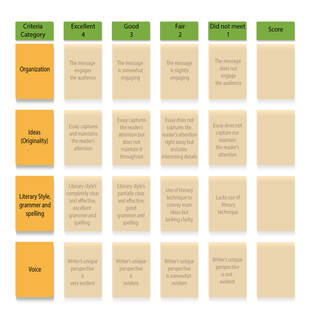
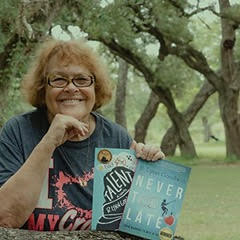
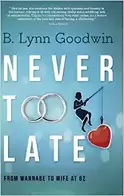
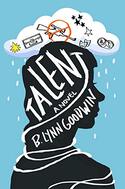
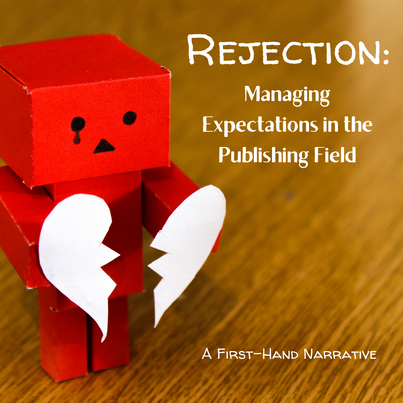
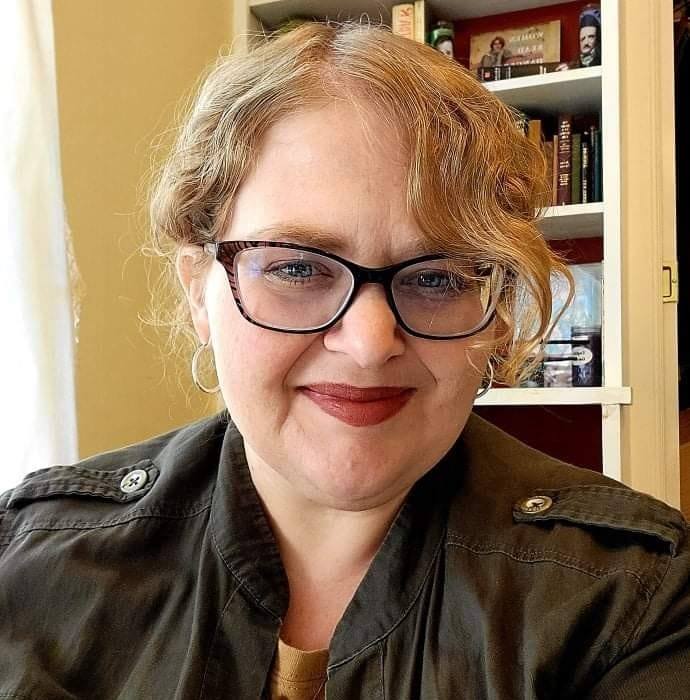
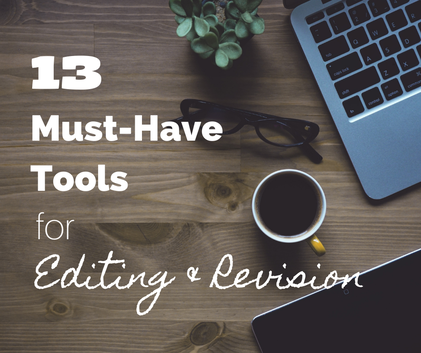





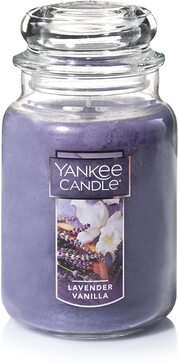







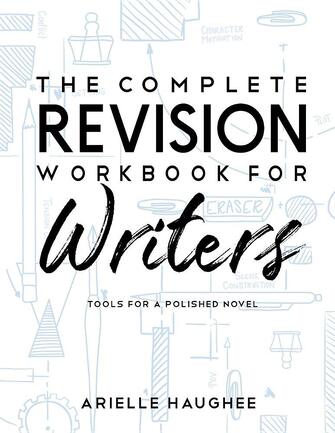
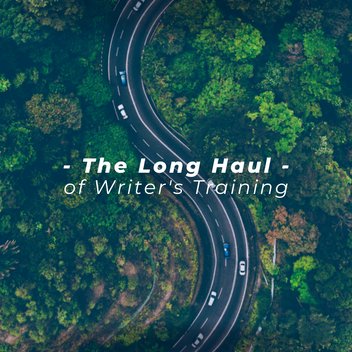
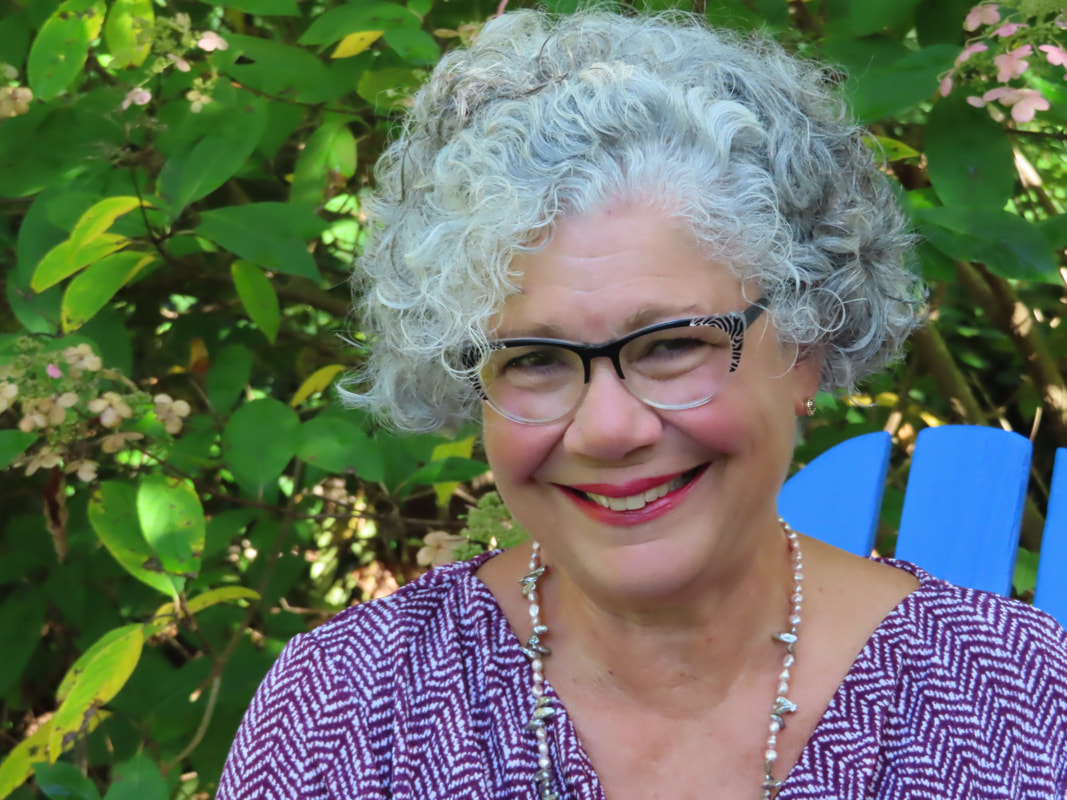
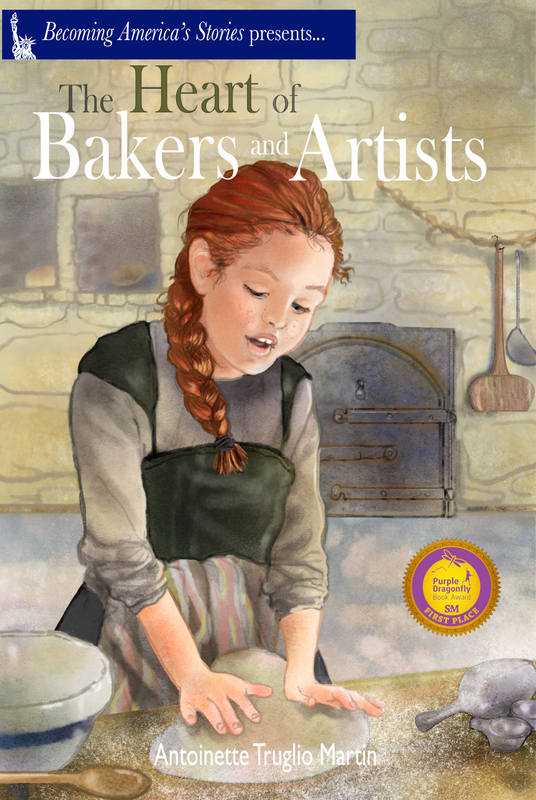
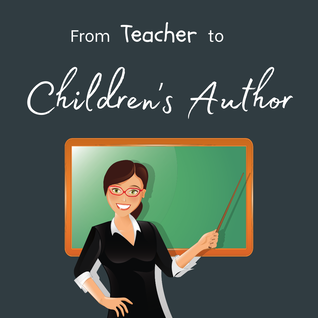
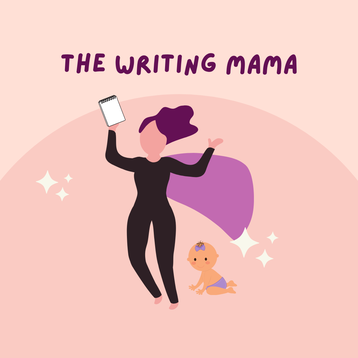
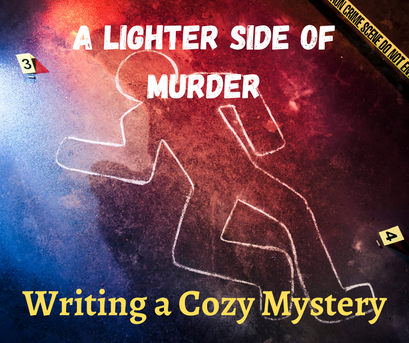
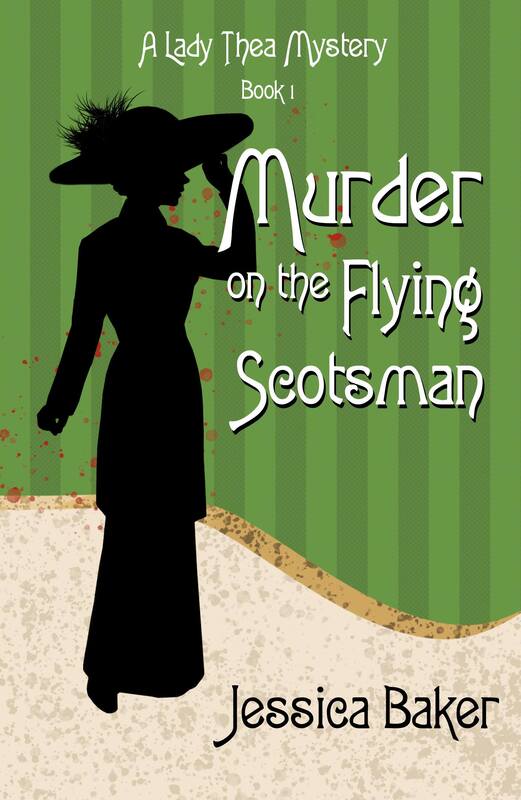

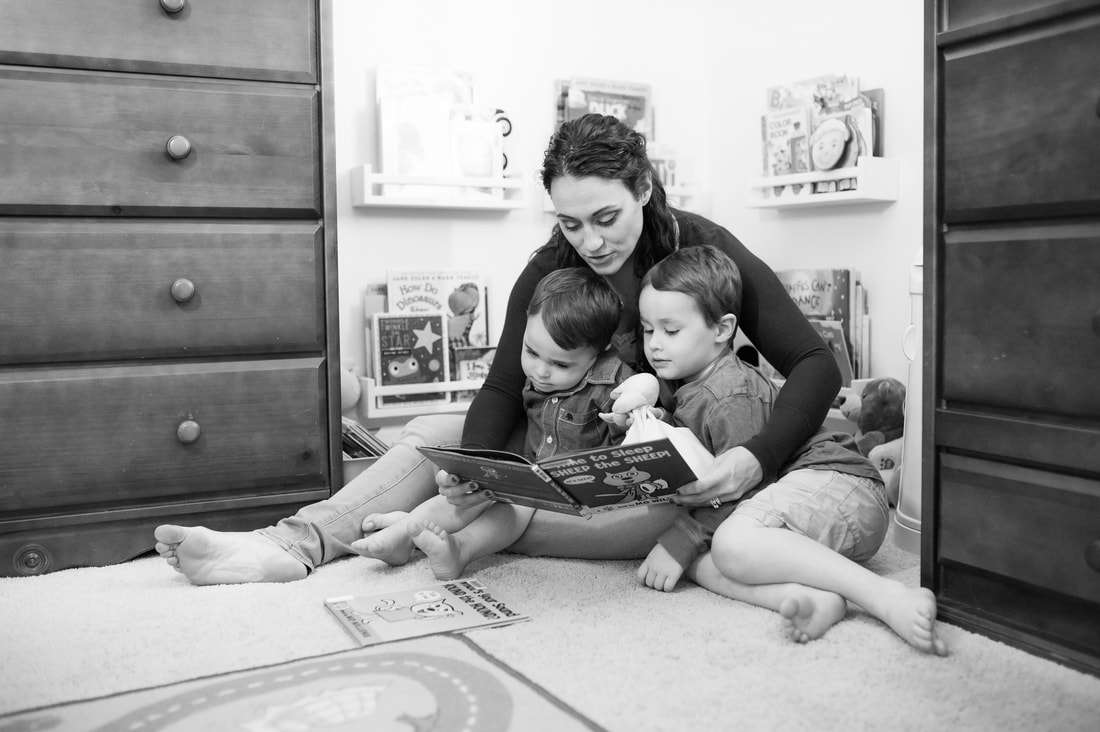


 RSS Feed
RSS Feed